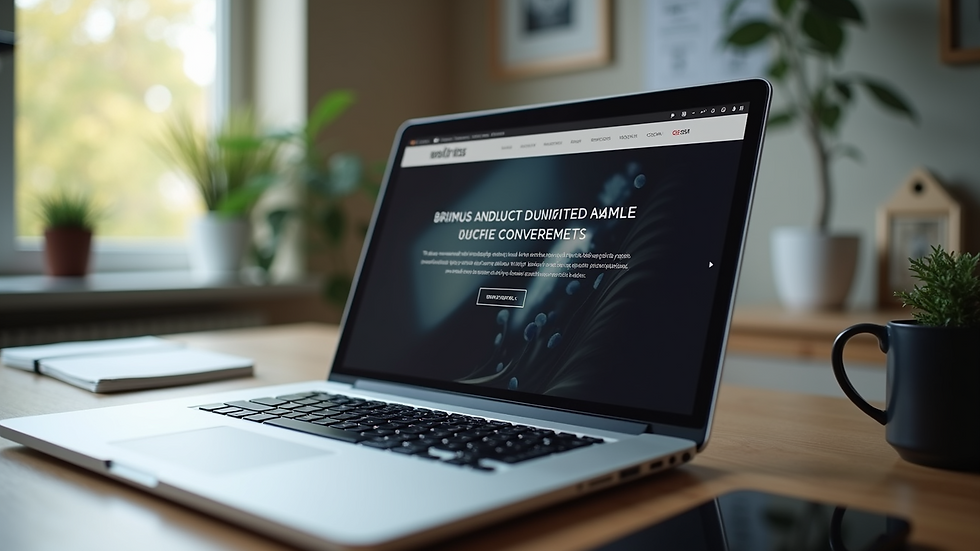The Ultimate Guide for Web Designers: Tips, Tools, and Trends
- Deniz Uyanik

- Jun 26, 2024
- 3 min read

Web design is a dynamic and ever-evolving field that blends creativity with technology. As a web designer, staying updated with the latest trends, mastering essential tools, and continually honing your skills is crucial for success. Whether you’re a seasoned professional or just starting out, this guide will provide valuable insights and resources to help you excel in your web design journey.
1. Embrace the Latest Trends
Web design trends change rapidly, and keeping up with them can set your work apart. Here are some of the latest trends to consider:
• Dark Mode: More websites are offering dark mode options to reduce eye strain and provide a modern look.
• Minimalism: Clean, simple designs with plenty of white space continue to be popular.
• Micro-Interactions: Small animations that provide feedback to users enhance user experience.
• Bold Typography: Large, attention-grabbing fonts can make a strong visual statement.
• 3D Elements: 3D graphics and animations add depth and interest to designs.
2. Master Essential Tools
The right tools can significantly enhance your workflow and the quality of your designs. Here are some must-have tools for web designers:
• Adobe XD: A powerful tool for designing and prototyping user experiences.
• Sketch: A vector graphics editor perfect for interface design.
• Figma: A collaborative design tool that allows for real-time feedback and editing.
• Canva: An easy-to-use platform for creating graphics and visual content.
• Webflow: A tool that allows you to design and develop websites visually.
3. Focus on User Experience (UX)
User experience is at the heart of web design. A well-designed website should be intuitive, easy to navigate, and provide value to the user. Here are some tips to enhance UX:
• Conduct User Research: Understand your audience and their needs through surveys, interviews, and usability testing.
• Create User Personas: Develop detailed profiles of your target users to guide design decisions.
• Wireframing and Prototyping: Use wireframes to outline the structure of your website and prototypes to test functionality.
• Accessibility: Ensure your website is accessible to all users, including those with disabilities, by following WCAG guidelines.
4. Optimize for Mobile
With more people accessing the web via mobile devices, responsive design is crucial. Ensure your designs look and function well on all screen sizes. Here are some best practices:
• Fluid Grids: Use flexible grid layouts that adapt to different screen sizes.
• Flexible Images: Ensure images scale appropriately for various devices.
• Touch-Friendly Navigation: Design buttons and links that are easy to tap on small screens.
• Performance Optimization: Optimize images and use efficient code to reduce load times on mobile devices.
5. Learn and Grow
Web design is a field that requires continuous learning. Stay ahead by expanding your skill set and knowledge base:
• Online Courses: Platforms like Coursera, Udemy, and LinkedIn Learning offer courses on web design and related topics.
• Web Design Blogs: Follow industry blogs like Smashing Magazine, A List Apart, and CSS-Tricks for insights and inspiration.
• Join Communities: Participate in forums and groups like Designer Hangout, Reddit’s web design community, and Dribbble to connect with other designers.
• Attend Conferences: Events like Awwwards Conference, Adobe MAX, and An Event Apart provide opportunities to learn from experts and network with peers.
6. Build a Strong Portfolio
A compelling portfolio showcases your skills and attracts potential clients or employers. Here are some tips for creating an impressive portfolio:
• Diverse Projects: Include a variety of projects that demonstrate your versatility.
• Case Studies: Provide detailed case studies that explain your design process and the impact of your work.
• Personal Branding: Develop a unique brand identity for yourself, including a logo, color scheme, and typography.
• Keep it Updated: Regularly update your portfolio with your latest work and remove outdated projects.
Conclusion
Web design is an exciting and rewarding field that offers endless opportunities for creativity and innovation. By staying current with trends, mastering essential tools, focusing on user experience, optimizing for mobile, committing to continuous learning, and building a strong portfolio, you can elevate your web design career. Embrace these tips and resources to create beautiful, functional, and user-friendly websites that stand out in the digital landscape.


